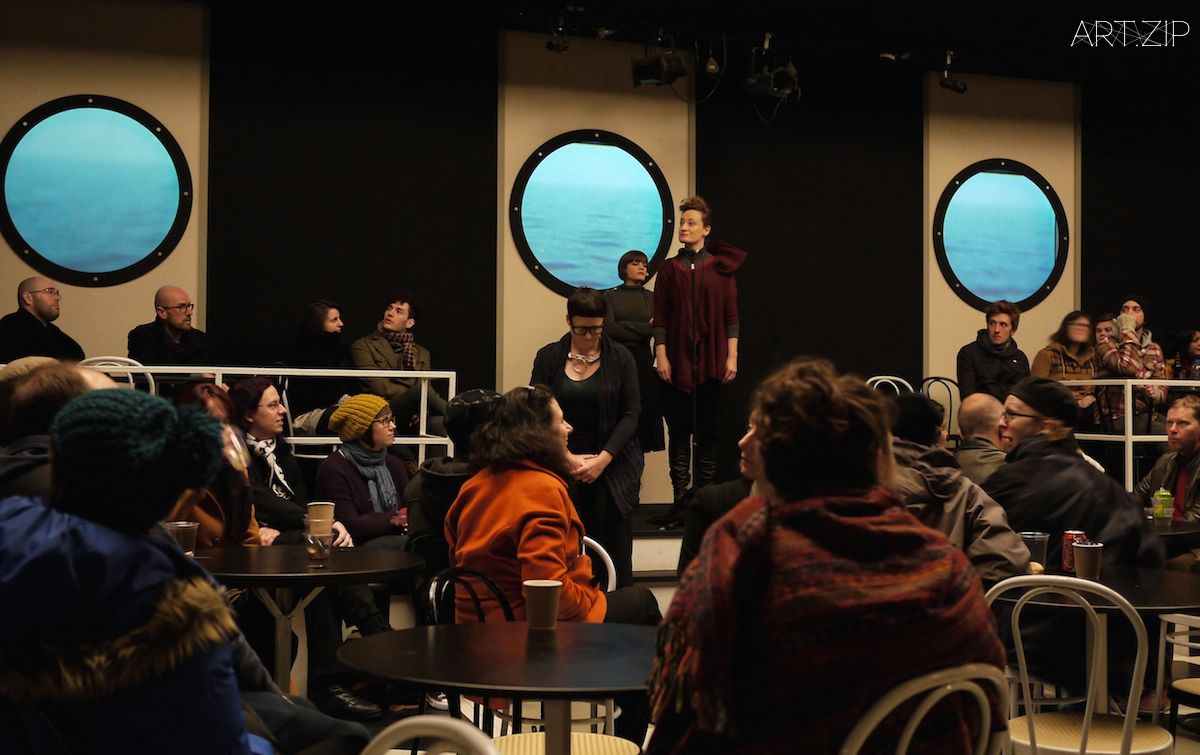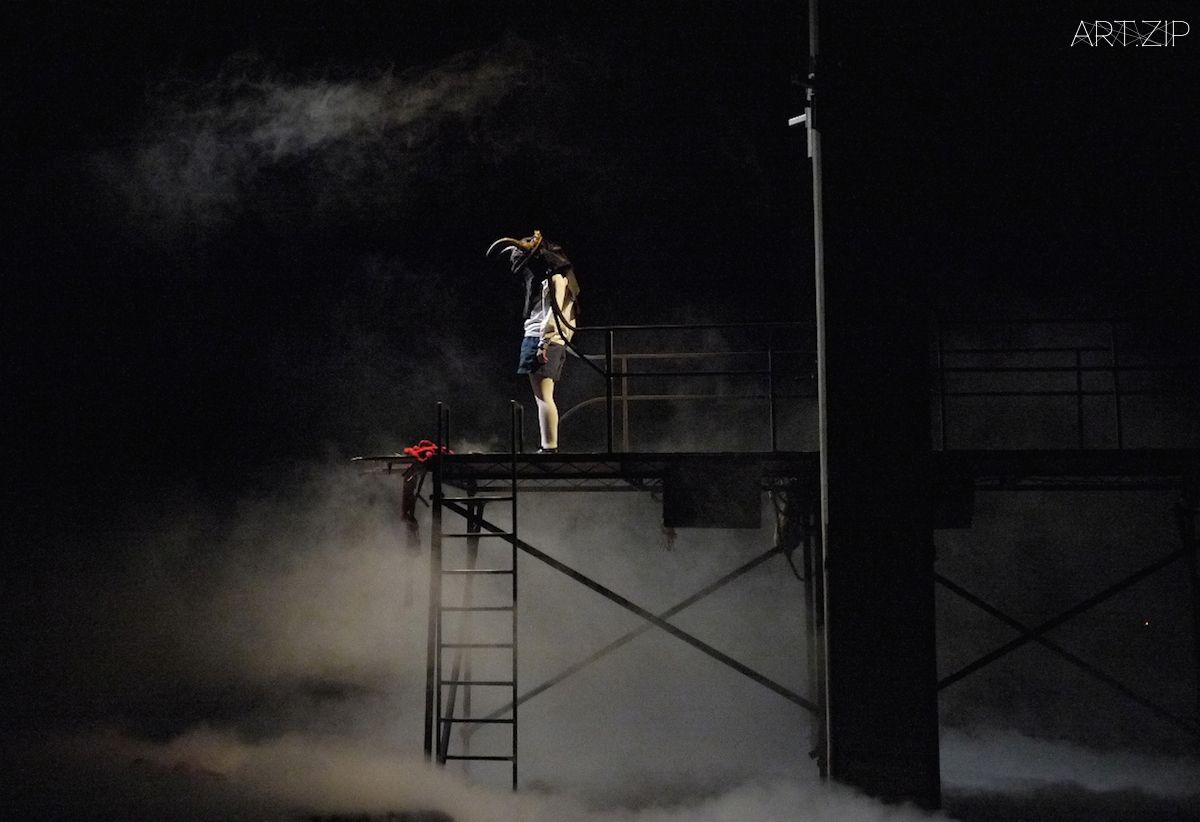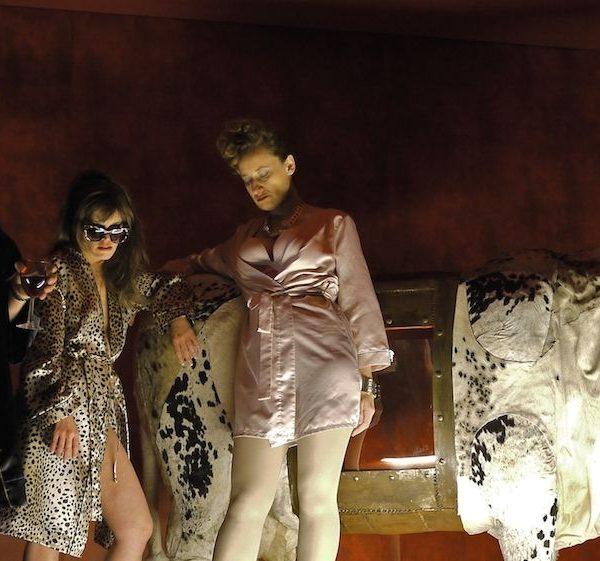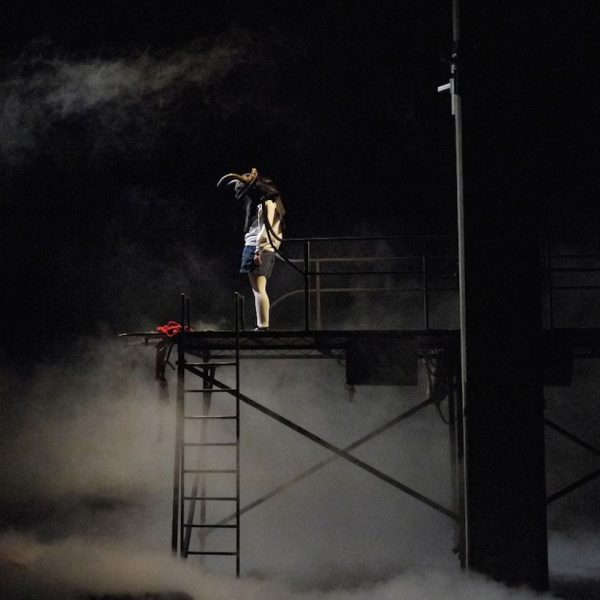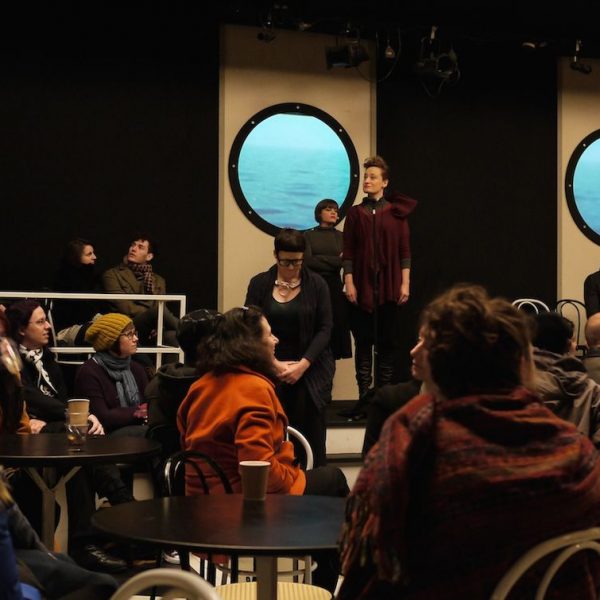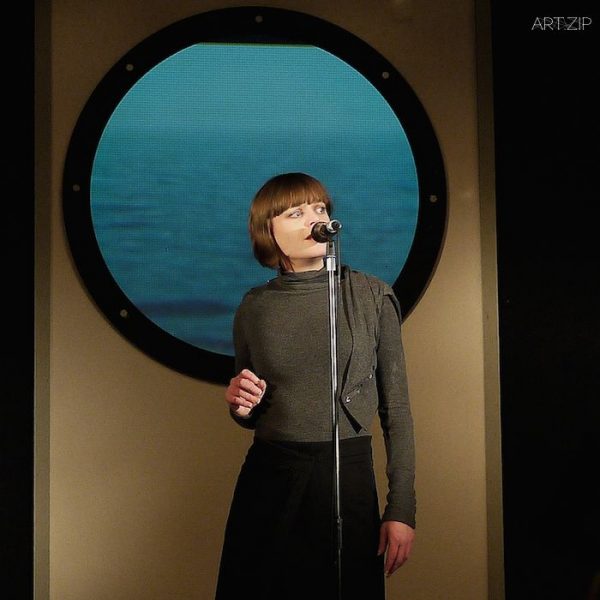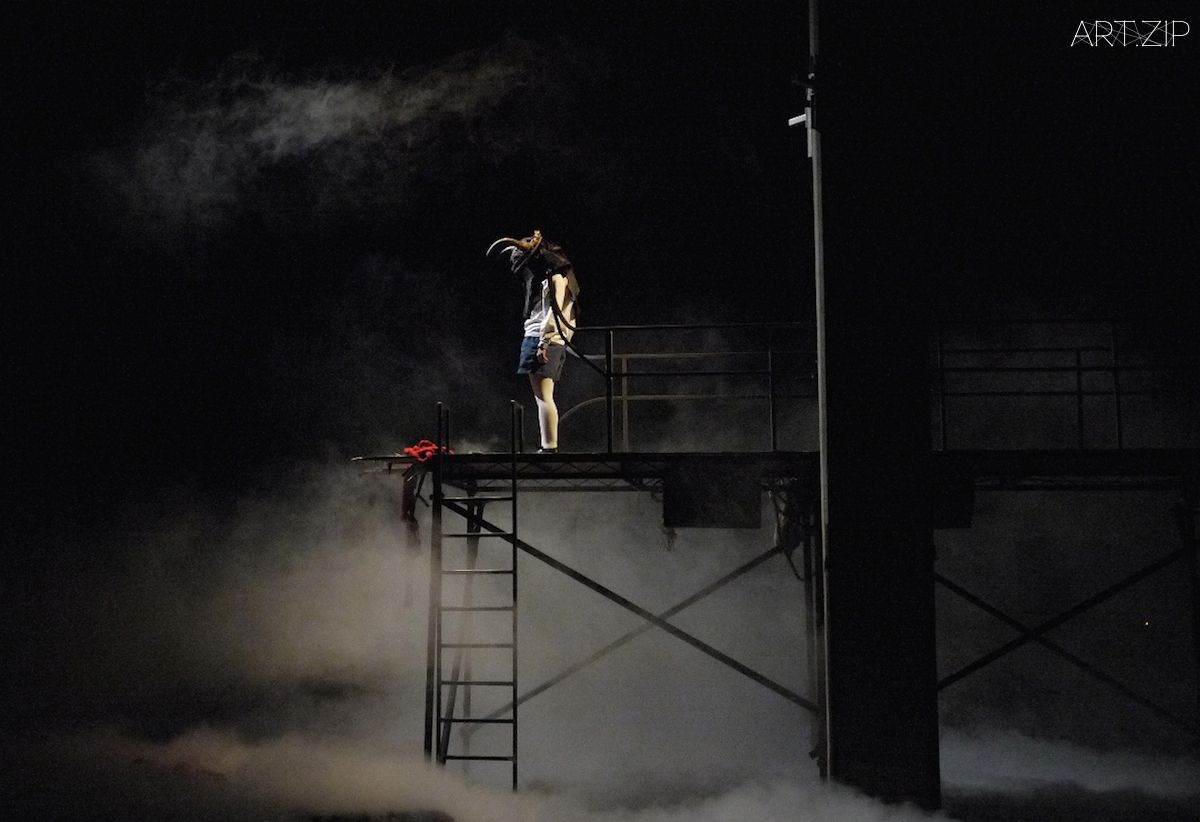
Text by: Joanna Dong / 撰文:董一燃
Translated by: Sherry Luo / 翻譯:羅逸清
After got out of the tube station, the GPS led us to an abandoned biscuits factory. It seemed to be the right place, but we were still not quite sure, as the east London in a winter night looks far lack of security.
Someone opened a door, shouting and directing all those hesitated souls into the door. I felt like Alice falling down into the rabbit hole, no longer certain what I would see after I entered that door.
The inspiration of this immersive production comes from the Argentine writer Jorge Luis Borges’ work, The House of Asterion. Borges’ original source comes from the ancient Greek myth. First of all, the ‘Architect’ in the title refers to Daedalus, a craftsman who designed an enormous Labyrinth under the order of Minos (King of Crete), and was built to trap Minotaur, a creature of half bull and half man. The creature was living inside the Labyrinth and being served with young boys and girls as the tributes from the city of Athens. The famous hero Theseus later volunteered himself to be served as one of the tributes in order to entered the Labyrinth and kill the creature. He promised to his father Aegeus, that he would hang a white sail on the boat on his way back if he has succeeded in killing the creature.
When Theseus arrived Crete, Minos’ daughter Ariadne fell in love with him. She taught Theseus how not to get lost in the Labyrinth, so that he could live. In majority versions of the mythology, Ariadne gave Theseus a thread, which enables Theseus to mark his way in the Labyrinth. Theseus successfully saved the people inside after he found and killed Minotaur in the labyrinth…The story goes long afterwards, but these are the inspirations of this Argentine work as well as this show.
From the moment of walking into the labyrinth, the feeling of a loss in direction and momentum became the theme. Inside the old vintage television that embedded on the wall, there were you, walking into the space in panic, sometimes regular, and sometimes upside down, accompanied with the sound from the magnified volume of the electric current, made everything terrifying.
When passing through a room, some weird characters asked you some questions, but the answers were even more bizarre than the questions themselves; there was a painted white chair, a model of a cruise liner floating in a rusty sink, when peaking through a window, you found yourself on the deck of that cruse liner… Round windows, cylinder-shaped ceiling, masts, long and narrow space, and those weird characters appeared again, with more bizarre explanations, made you even more confused and lost. In the end, you finally realized that you were one of those ‘tributes’ for Minotaur.
走出地鐵站,跟著GPS尋找廢棄的餅幹工廠,找到了,還是猶豫,寒夜裡的東倫敦看上去一點都沒有安全感。有人打開一扇門,呼喊著所有躊躇著的人們,好似愛麗絲掉進兔子洞,從走進那扇小門我就不再知道我會看到什麽。
這部戲的創作靈感來自阿根廷作家豪爾赫·路易斯·博爾赫斯(Jorge Luis Borges)的作品《阿斯特瑞恩的房子(The House of Asterion)》。然而博爾赫斯的這部作品的根源則來自古希臘傳說。首先這部戲題目中的建築師指的是代達羅斯,是希臘神話中的一名工匠,為了囚禁半人半牛的怪獸彌諾陶洛斯,他受彌諾斯之托為他建造一座巨大的地下迷宮。迷宮建好後,怪獸居住其中,以雅典城進貢的童男童女為食。後來著名英雄忒修斯自願作為童男之一前去除掉這個怪物。他和父親埃勾斯約定,如果成功地殺死了怪物,就在返回的時候於船上懸掛白帆。忒修斯來到克里特後,彌諾斯的女兒阿里阿德涅愛上了他。阿里阿德涅為使愛人免於一死,指點他在迷宮裡不會迷路的方法。在大多數版本的神話裡,阿里阿德涅給了忒修斯一個線團以使他可以標記出走過的路。忒修斯成功地在迷宮中找到了彌諾陶洛斯並將其殺死,然後領著其他人走出了迷宮……故事還很長,但是以上的部分正是阿根廷的這部作品以及這出戲的靈感來源。
The fear of isolation and helplessness was growing with the day and night presented from the turned-on-and-offed-light. Under that light, a pair of young man and woman appeared in the crowd, they were hanging up in the air, seemed had nothing to do with the surroundings, agile and harmless, but triggered the fear of the controller.
We were divided into men and women walking into the other side of the Labyrinth. The inner fear deep down from the heart constantly rushing out by the darkness. Just when this fear about to reached to an extreme, the curtains fell down. Among the ropes, we saw that pair of young man and woman again, shuttle back and forth. It was finally revealed that they were Ariadne and Theseus. The ropes then fallen one by one until the last two remaining, then Ariadne fell down, only left with Theseus, the hero who was about to lead us out of the Labyrinth.
During the one-hour-and-a-half show, the first half spread the sense of lost and desperation, while the second half pushed the audience into an unexpected darkness, forcing them to expect the hope from even a slight of the light.
The characters Ariadne and Theseus were performed by two acrobats. Without a single conversation, they presented us the mythical tale of the threads aesthetically and poetically.
The production company shunt is a collective of performing artists who’s known for immersive theatre. Founded in 1998, shunt has awarded twice for Peter Brook ‘Empty Space Award’.
在走進迷宮的那一刻起,不知所措便成為了主題。壁上嵌著圓弧屏面的老式電視,裡面是驚慌闖入的你,時而正立,時而顛倒,放大的電流聲十分恐怖。路過一個房間,奇怪的人物與你碰面,問題回答得比問題本身更讓人疑惑。路過白漆的桌椅,郵輪的模型浮在銹跡斑斑的水槽裡,窺視進一個窗口,你終於發現自己已經身處甲板。圓形的窗,還有柱形的頂棚,桅桿,還有狹長的空間,那些講著莫名其妙的語言的人們再次出現,越多的解釋越讓你不知所雲,原來你就是“貢品”的一員。與世隔絕的恐懼和無奈隨著那熄燈亮燈所闡述的日夜交替逐漸增長。射燈的投照下,兩個年輕的男女出現在人群中,他們懸吊在半空,似乎與周圍的一切無關,輕靈並不傷害,卻引發操控者的恐懼,我們被分成男女兩隊再次走進另一面迷宮。黑暗讓人心裡的恐懼不停湧現,在這種恐懼接近極限的時候,圍布落下,在繩索中,我們看到之前的那對男女再次穿梭期間。原來這正是阿里阿德涅和忒修斯。繩索一根根墜落,直到最後兩根,阿里阿德涅墜落了下去,唯留下忒修斯,這也正是即將帶我們走出迷宮的英雄。
演出的一個半小時裡,前半部分營造讓人茫然和絕望的氛圍,後半部分則將你推進不可預知的黑暗中,去等待哪怕一點點光線所帶來的希望。阿里阿德涅和忒修斯的扮演者是兩位雜技演員,沒有一句對白,他們把有關原來的傳說中線團的橋段表現得非常唯美和富有詩意。
演出劇團尚特(shunt)是一家以體驗式現場表演著名的藝術團體。 創始於1998年的尚特劇團曾獲得過兩次彼得·布魯克(Peter Brook)“空的空間(Empty Space Award)”戲劇獎。

